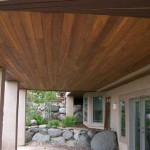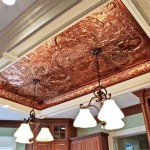Why Did Victorian Homes Have High Ceilings?
Victorian homes are known for their grandeur and elegance, and one of their most striking features is their high ceilings. But why did Victorian homes have such high ceilings? There are several reasons for this, both practical and aesthetic.
Practical Reasons
1. Ventilation: High ceilings allowed for better ventilation in a time when air conditioning did not exist. The warm air would rise to the ceiling, creating a natural convection current that drew in cooler air from outside. This helped to keep the home more comfortable, especially during the hot summer months.
2. Lighting: High ceilings allowed for more natural light to enter the home. This was especially important in the days before electric lighting, when people relied on natural light to see. The high ceilings allowed for larger windows, which let in more light and made the home brighter.
3. Space: High ceilings create a sense of spaciousness and grandeur. This was important for Victorian homeowners, who often wanted to show off their wealth and status. High ceilings made the home feel more impressive and opulent.
Aesthetic Reasons
1. Style: High ceilings were simply fashionable during the Victorian era. They were seen as a sign of elegance and sophistication, and they were often used in conjunction with other Victorian architectural features, such as bay windows, elaborate moldings, and decorative fireplaces.
2. Drama: High ceilings can create a sense of drama and grandeur. The height of the ceilings can make a room feel more impressive and stately. This was especially important for public rooms, such as parlors and dining rooms, where people often entertained guests.
3. Proportion: High ceilings can help to balance the proportions of a room. A room with a high ceiling will not feel as cramped as a room with a low ceiling. This is because the height of the ceiling draws the eye upward, making the room feel more spacious.
Conclusion
There are several reasons why Victorian homes have high ceilings, both practical and aesthetic. These ceilings allowed for better ventilation, lighting, and space, and they also created a sense of style, drama, and proportion. While high ceilings are not as common in modern homes, they remain a popular feature in historic homes and buildings.

High Ceilings In Old Houses Looking For Documentation Page 2 The Historic District

8 Reasons Why We Love Victorian Houses Real Homes

Victorian Style House Characteristics Design Layouts America S Best Plans Blog

What Makes A Victorian Style House
What Kind Of Rooms Did Victorian Houses Have Quora

Victorian House Home Architecture Style

8 Reasons Why We Love Victorian Houses Real Homes
Why Are House Ceilings So Low In England Quora

A Complete Guide To Victorian Home Styles Features Plans

Victorian House Home Architecture Style
Related Posts








